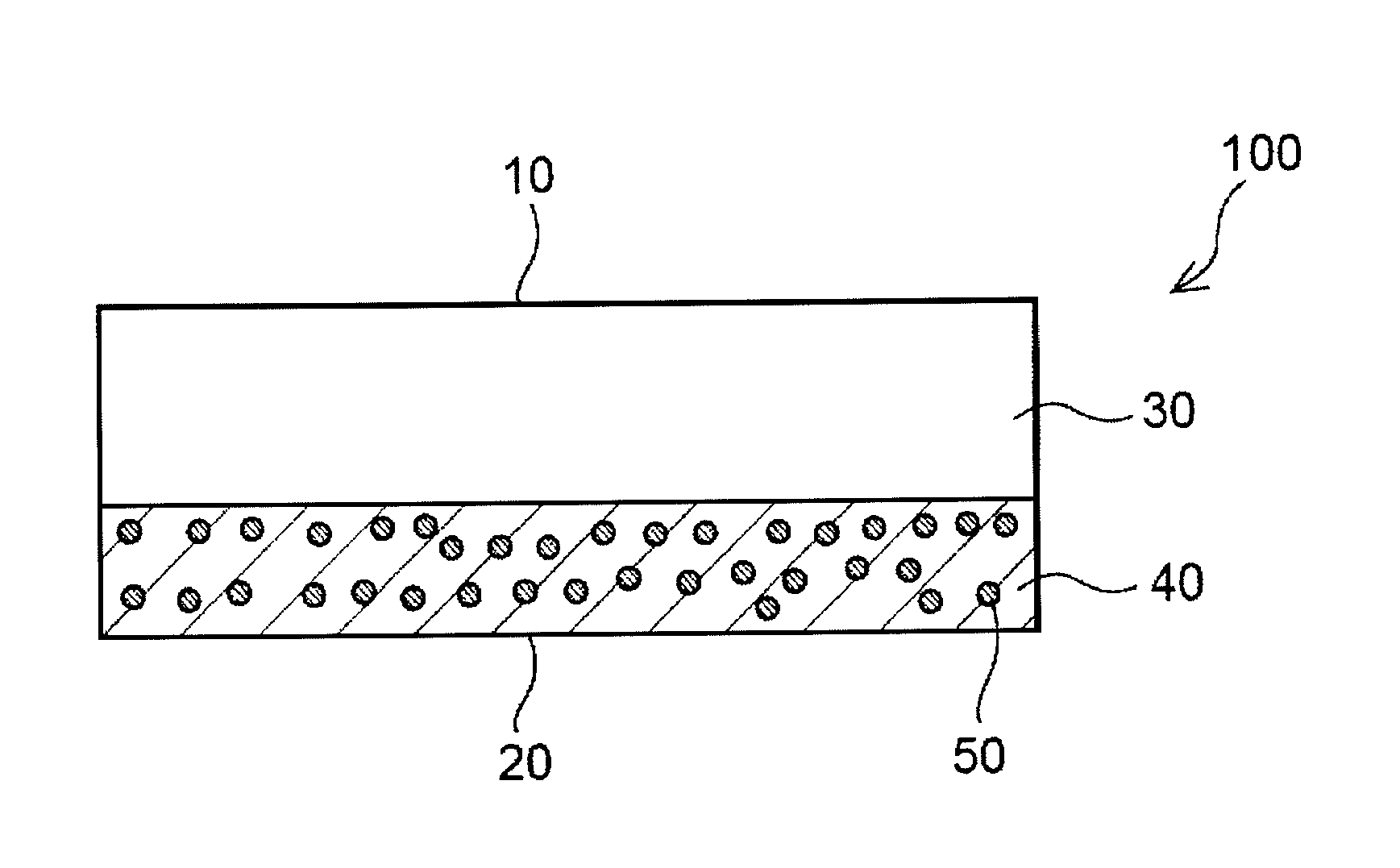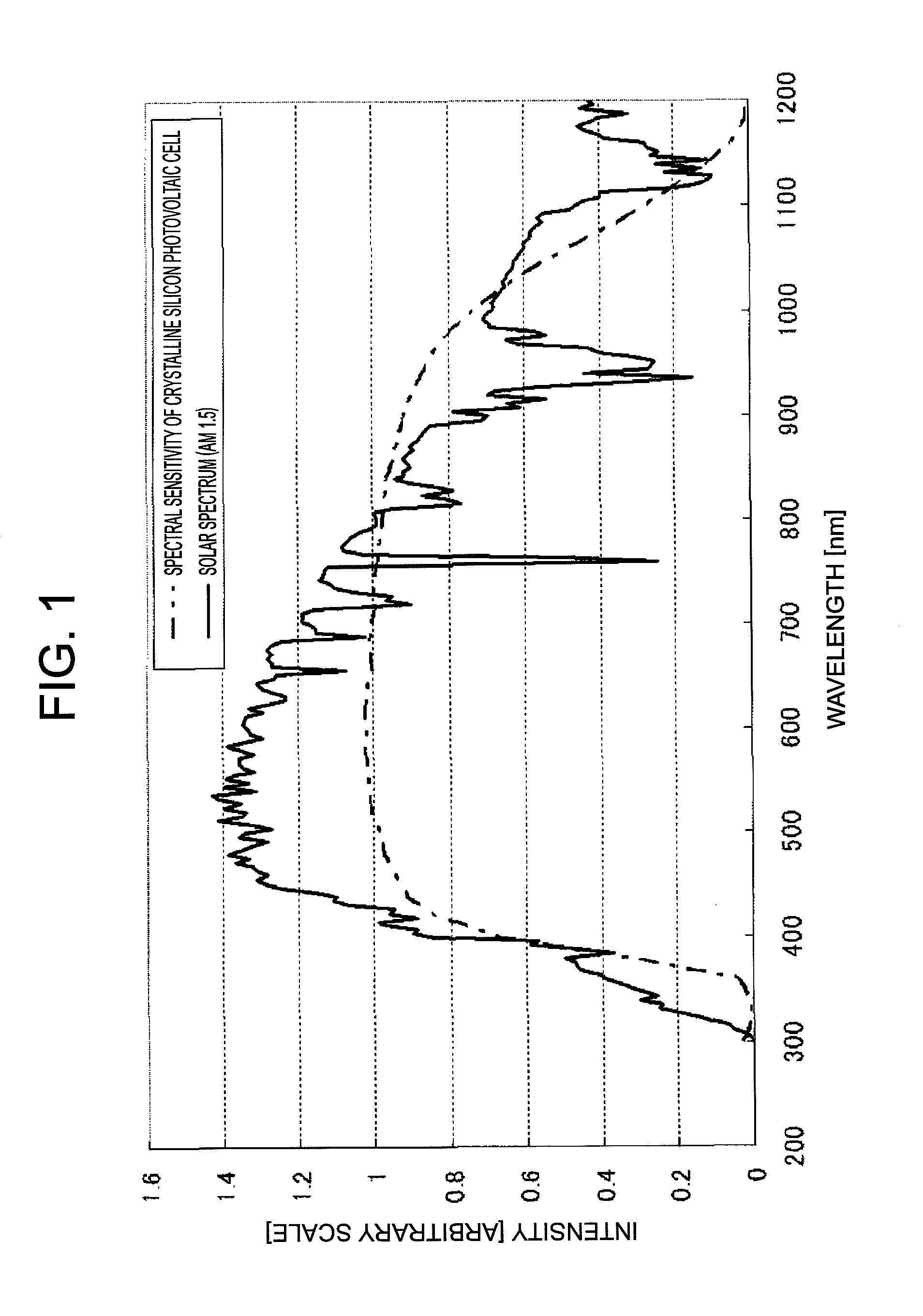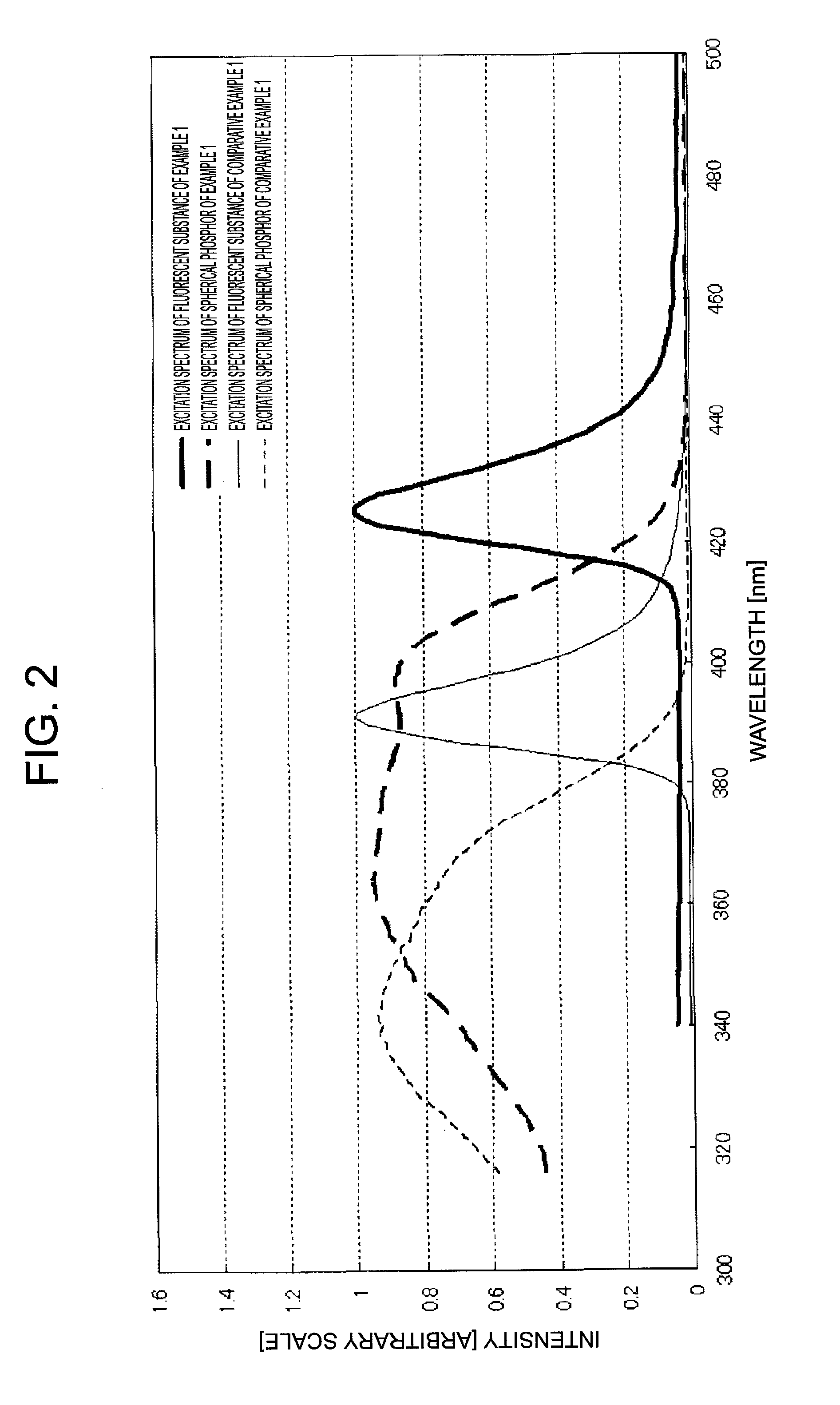Spherical phosphor, wavelength conversion-type photovoltaic cell sealing material, photovoltaic cell module, and production methods thereof
a photovoltaic cell and sealing material technology, applied in the field of spherical phosphor, wavelength conversion-type photovoltaic cell sealing material, photovoltaic cell module, can solve the problems of insufficient amount of incident sunlight which reaches the photovoltaic cell element, increased proportion of light not contributing to power generation, and sometimes not as high as would be expected. , to achieve the effect of improving the light utilization efficiency of the photovoltaic cell module and stably improving the power
- Summary
- Abstract
- Description
- Claims
- Application Information
AI Technical Summary
Benefits of technology
Problems solved by technology
Method used
Image
Examples
example 1
[0184]First, 0.96 g (0.04 mol) of sodium hydroxide was weighed, and 22.5 ml of dehydrated tetrahydrofuran was added thereto in a nitrogen atmosphere. A solution obtained by dissolving 2.52 g (0.02 mol) of 2-acetylthiophene and 3.70 g (0.024 mol) of 4-fluoromethyl benzoate in 12.5 ml of dehydrated tetrahydrofuran was added dropwise thereto for 1 hour under intensive stirring. Then, reflux was caused under nitrogen steam for 8 hours. The resultant was cooled to room temperature (25° C.), 10.0 g of pure water was added thereto, and 5.0 ml of 3N hydrochloric acid was added thereto. The organic layer was separated and concentrated under reduced pressure. The concentrate was recrystallized, thereby obtaining 2.83 g (yield: 57%) of FTP.
3Phen >
[0185]Then, 556.1 mg (2.24 mmol) of the synthesized FTP and 151.4 mg (0.84 mmol) of 1,10-phenanthroline (Phen) were dispersed in 25.0 g of methanol. A solution obtained by dissolving 112.0 mg (2.80 mmol) of sodium hydroxide in 10.0 g of methanol was a...
PUM
| Property | Measurement | Unit |
|---|---|---|
| maximum excitation wavelength | aaaaa | aaaaa |
| excitation wavelength | aaaaa | aaaaa |
| refractive index | aaaaa | aaaaa |
Abstract
Description
Claims
Application Information
 Login to View More
Login to View More - R&D
- Intellectual Property
- Life Sciences
- Materials
- Tech Scout
- Unparalleled Data Quality
- Higher Quality Content
- 60% Fewer Hallucinations
Browse by: Latest US Patents, China's latest patents, Technical Efficacy Thesaurus, Application Domain, Technology Topic, Popular Technical Reports.
© 2025 PatSnap. All rights reserved.Legal|Privacy policy|Modern Slavery Act Transparency Statement|Sitemap|About US| Contact US: help@patsnap.com



